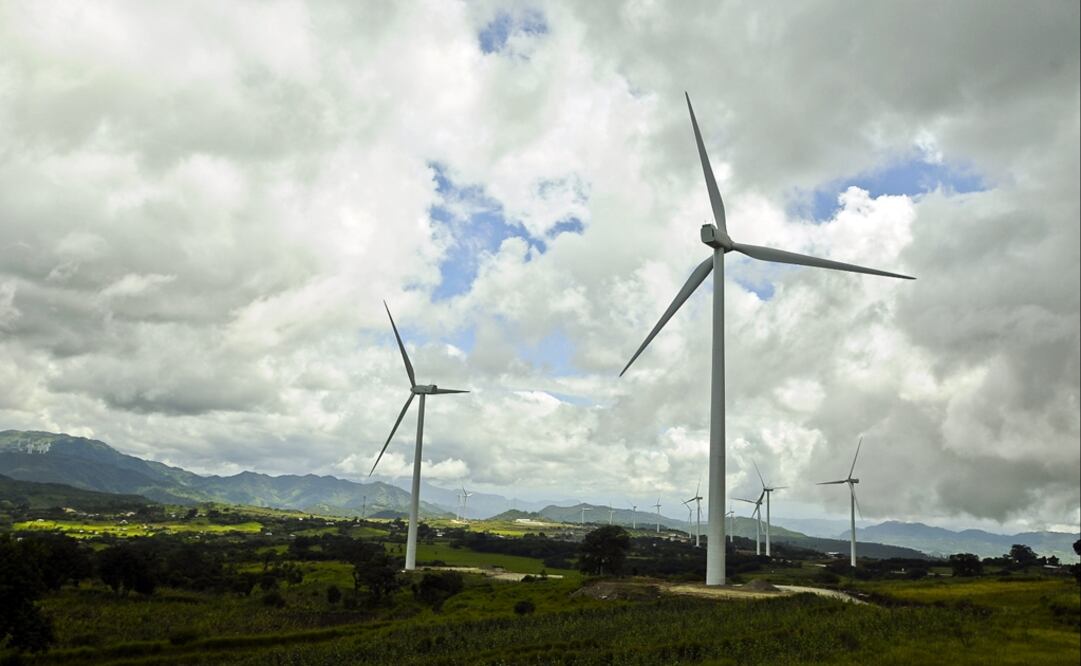Más Información

Morena analiza disminución de pluris y elección popular de consejeros del INE: Monreal; serán revisadas en la reforma electoral, dice

Rastro de jets vinculados al narcotráfico lleva a un vendedor en California… y a un punto ciego de la regulación aérea en Estados Unidos

Secretaría Anticorrupción sanciona a dos empresas por buscar contratos con información falsa; imponen multa de miles de pesos

Banxico se despide de 2025 con otro recorte a la tasa de interés; queda en 7% por ajuste de 25 puntos base

Sentencian en EU a yerno de “El Mencho” a más 11 años de prisión; el “Guacho” fingió su muerte para evitar captura
While Mexico’s new government is planning to build yet another refinery at the Dos Bocas port in the state of Tabasco , betting on fossil fuels, the European Union is leading an energy crusade and has proposed to stop selling cars with internal combustion engines by 2050.
The Mexican government’s transition to renewable energies has been gradual, but if said international standards are not met by 2050 , the financial, social, and environmental consequences in the country could be severe.
In spite of recent developments in renewable energy technologies, Mexico still clings to fossil fuels; 75% of the country’s electric energy production comes from gas, coal, and oil, while only 17% comes from renewable sources, mostly hydroelectric and wind technologies, and only 6% comes from clean energy sources , according to the latest Report on Clean Energy Development issued by the Ministry of Energy .
“We seem to be falling behind. Due to its geographic position, Mexico has great potential for the production of solar and wind power. The new government needs to implement more aggressive policies to change this state of affairs ,” commented doctor Juan Tonda, an investigator from the Renewable Energies Institute at the National Autonomous University of Mexico (UNAM) .
According to the International Renewable Energy Agency , Mexico is one of the most privileged regions in the world in terms of solar resources. Every day, the country receives an agerage of 5.5 kilowatt-hours per square meter (kW/m²) in solar radiation. There is an even greater potential in the country’s northeast, with an average of 8 kW/m² in spring and summer .
Though Mexico receives more solar radiation than China , the Asian Giant currently leads the world stage in solar energy production.
“ Mexico has a solar energy potential four times larger than that of the United States . We celebrated the inauguration of a 750 Mw plant in the state of Coahuila triumphantly, but why haven’t we built more plants in Baja California and Sonora?” said Dr. Juan Tonda.
According to records from the Mexican Wind Power Association (AMDEE) , the country reached a wind power production capacity of 4,000 megawatts (Mw) in 2018 . However, the country has the potential of producing more than 40,000 Mw .
“This energy is very cheap and it can be produced in most of Mexico’s western coastline,” stated Leopoldo Rodríguez, chairman of the AMDEE .
To date, wind power projects have been implemented in 11 states, mostly in the Isthmus of Tehuantepec area, which is considered to be the most competitive region, though there have been new wind projects in northeast ( Tamaulipas, Nuevoleón ) and central ( San Luis Potosí, Querétaro ) Mexico.
One of the most ambitious projects of Mexico’s new administration led by President Andrés Manuel López Obrador is the construction of a new refinery in Dos Bocas, Tabasco .
“It would take at least six years for the new refinery to be fully operatinal, which is environmentally irresponsible, to say the least,” stated Antonio del Río, director of UNAM’s Renewable Energies Institute .
“There are currently around 40 million vehicles circulating in this country . In the short term, we will surely need gasoline and it would be ideal for us to acquire said fuel at a low price, instead of importing it as we have done so far. But we also need to bet on renewable energies, as well as the use of public transport and electric cars,” commented Juan Tonda.
According to the 2015 National Greenhouse Gas Inventory issued by the National Institute of Ecology and Climate Change , Mexico produces 665 thousand gigagrams of carbon dyoxide and is the 12th largest carbon emitter at the global scale . Transport accounts for 26% of said emmissions.
“If we do not change course soon, I’m afraid Mexico’s automotive industry, which focuses on the production of gasoline-fueled vehicles, will suffer the consecuences. There will come a time when we will not be able to export gasoline-fueled vehicles because other countries will be generating electric cars and other means of transport,” stated del Río.
“Sure, we can use hydrocarbons to build other materials and use them in other ways. It is very important that we take care of our hydrocarbons. That is what president López Obrador said and I agree with him. But the best way of protecting our hydrocarbons is by not burning them,” he stressed.
“We will soon fall behind the rest of humanity if we keep depending on hydrocarbons. Oil is a finite resource and one day it will run out . We shouldn’t wait any longer. This country needs aggressive policies to speed up the transition to renewable energies,” concluded Tonda.
dm
Noticias según tus intereses
[Publicidad]
[Publicidad]










